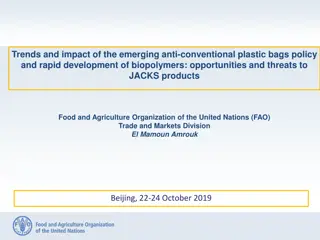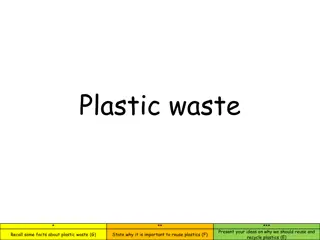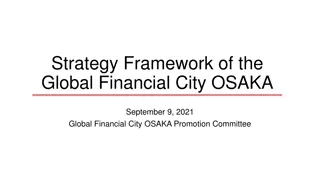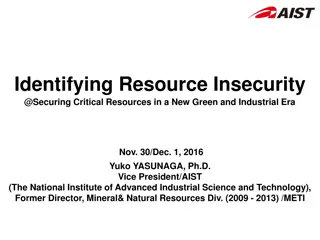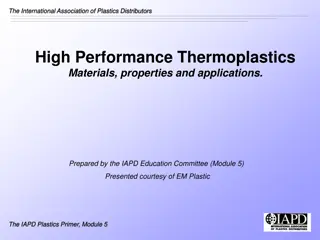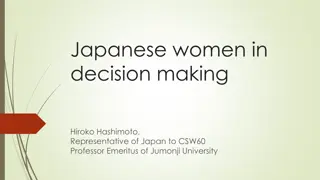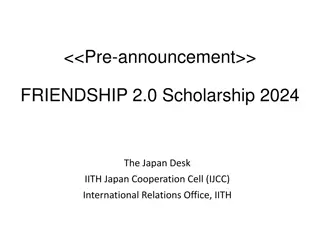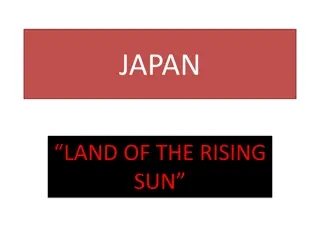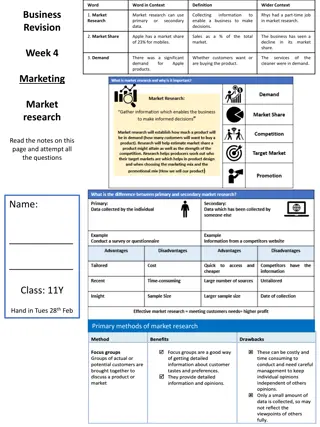Japan Plastics Market Insights: Products, Trends, and Opportunities
Explore the Japanese plastics market with insights on products like household items, construction materials, packaging, and more. Uncover trends, challenges, and strategies for success in this dynamic industry. Dr. Silke Bromann provides valuable research and consulting expertise for European companies aiming to navigate the Japanese market successfully.
Download Presentation

Please find below an Image/Link to download the presentation.
The content on the website is provided AS IS for your information and personal use only. It may not be sold, licensed, or shared on other websites without obtaining consent from the author. Download presentation by click this link. If you encounter any issues during the download, it is possible that the publisher has removed the file from their server.
E N D
Presentation Transcript
About Japan Webinar Series: Plastics Products & Components Silke BROMANN Dr. Silke Bromann Japan Consulting o 1
Dr. Silke BROMANN Research and teaching on Japanese economy & enterprises since 1998 Dr. Silke Bromann Japan Consulting founded 2011 Research, analysis & consulting on markets and economy in Japan 2
Table of Content The market for plastic products & components The characteristics of Japanese supplier networks Opportunities & challenges for European companies Strategies for success 3
Products covered in this report Plastics in non-primary forms, e.g. plastics sheets or films Household items & construction materials made of plastic Packaging Automotive and machine parts made of plastic 4
Plastics in non-primary forms Japan is the fifth-largest producer of plastics in the world with an overall production volume of 12 million tons Total production value in Japan ca. 2,900 bn Yen (2012) Setback after Lehman shock, path towards recovery Trends: health and environmental concerns, sustainability 5
Use of plastics in Japan (2010) Source: Japan Plastics Industry Federation (2013): Shuy koku no shij betsu purasuchikku shiy wariai 2010 (Percentages by user market in the main industrial countries, 2010), Internet: http://www.jpif.gr.jp/5topics/topics.htm 6
Household items & construction materials Household items: Market volume 314 bn Yen Health issues, Quality labels Construction materials: Usage of plastics in construction higher than in other industrial countries Legal issues, standards, Quality labels 7
Packaging Market volume 1,600 bn Yen Trends: shrinking package sizes, convenience food, environmental and health concerns Regulations concerning food packaging, labelling & recycling 8
Automotive parts Different demand trends in Japanese and overseas markets General trends: E-Mobility Lightweighting Environmental issues 10
Japanese production of plastic parts for transport machinery, in billion yen Source: Ministry of Economy, Trade and Industry (2013): Paper, printing, plastics products and rubber products statistics, Tokyo: Ministry of Economy, Trade and Industry, Internet: http://www.meti.go.jp/statistics/tyo/s eidou/result/ichiran/08_seidou.html 11
Parts for machinery Electric & electronic devices: fluctuating demand, price competition Medical equipment: growth trend, regulations Other machinery: positive trend in construction site equipment 12
Japanese supplier networks OEM manufacturers (automobile manufacturers) First-tier suppliers (components such as dashboards, seats, wiring) Second-tier suppliers (parts and subassembly of components) Lower tier suppliers (parts, parts processing, standard parts) 13
Japanese supplier networks Production keiretsu Qualitative bonds in the keiretsu relationship Long-term relationship Cooperation in product development Dispatch of managers Trend of lessening bonds Less rigid structure in sectors other than automotive Trend: more independent supplier SMEs: jisha seihin (independent product development), new distribution channels (other sectors, other materials) 14
Opportunities for European companies Niche products, USP New materials & technologies Globalisation of supply chains 15
Challenges for European companies High expectations regarding quality & service keiretsu networks Differences in standards and consumers preferences Especially for components: harsh competition in terms of cost-effectiveness and innovation 16
Strategies for success Innovation, Quality & Service Nurturing of contacts Long-term commitment Cooperation with Japanese partners 17
Many Thanks! Silke BROMANN Dr. Silke Bromann Japan Consulting www.bromann-japanconsulting.de 18



